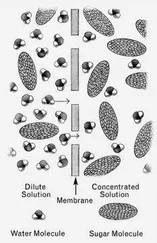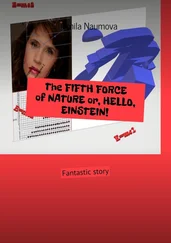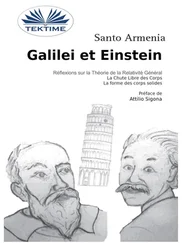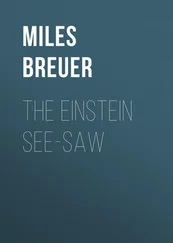With the smooth coordination of long experience, he moved his hands through the standard cuff calibration gestures: point index finger, thumb up, thumb down, clench fingers over thumb, clench fingers thumb up, spread fingers, extend arm, touch nose with fingertips, touch top of head with palm, and so on. His gestures followed graphic cues provided by the glasses. Then he inserted the molded sound tubes in his ears and rotated his head up, down, right, and left in response to more calibration cues.
Finally he leaned back in the recliner, adjusting the chair so that it gave his back good support while leaving his head free to “look.” He blinked twice, and the glasses switched opaque. Involuntarily his eyes moved from side to side, seeking to penetrate the near total darkness. He relaxed in the dark, considering what should be done next, feeling a slight warmth as the infrared beams of the glasses scanned his eyes, locating his pupils.
He blinked his eyes three times in rapid succession, and the darkness vanished. He hung above a landscape. To the east he could see a mountain range, and to the south a vast desert. He turned his head. Northward was a lush green forest, and to the west a broad body of water. This virtual reality desktop had been done by a Berkeley programmer with too much time on his hands. To some extent it reflected his Northern California worldview. Even at this distance George could see stylized whales, sea monsters, and the suggestion of an island in the blue water, several pyramids and a green palm-ringed oasis out in the desert, smoke rising from the chimney of a cabin in the forest, and a Gothic castle perched high atop one of the tall mountains.
George knew intellectually that the scene was only an electronic illusion that was being painted directly on his retinas by the quick color-modulated laser beams of his glasses. But the illusion was so seamless, so well synchronized with the motions of his head, so vividly there, that the vision center of his brain had already been taken in and was completely convinced. He could not doubt that this world existed, within some immediate definition of existence.
He raised his hand before his face. His right hand, as represented by a structure of pink shaded polygons, hung before his field of view, drawn in considerable detail and texture but supported by an arm that was shown only in pink wire-cage outline. Since he did not expect to meet anyone else here, he usually saved processing power by not “wearing” much of a body in virtual space. He pointed his index finger, toward a gleaming white building far to the south where the desert joined the green plane below, touching his thumb to his middle finger to control his speed.
The flight took him above a meadow dotted with clumps of wildflowers. He dived until he was very close to the surface of the meadow and could examine the flowers as they passed by. They were generated with some fractal algorithm, and each flower was distinctly different in its intricacies.
George found this exhilarating, almost as if he were really flying. He loved paragliding and flying rigid-wing gliders. Since moving to Seattle he had spent many hours searching out the powerful updrafts in the foothills of the Cascade Range. Now he angled downward toward the white building, watching as it grew in size and complexity. He halted on the green lawn before the entrance and looked upward.
The Palace filled the scene before him, unchanged and unchanging. He tilted his head back, looking up at the magnificent edifice. On the foundation of massive gray rough-hewed stone blocks stood an edifice of tall grooved columns of grainy milk-white marble that supported a high pedimented roof. The vast construction stretched away to a hazy vanishing point in the desert to the south. Over the arched entry, engraved in majestic gold letters, were the words:
LEM DATA ANALYSIS SYSTEM VIRTUAL DESKTOP — VERSION 2.1A GIVE UP ALL SLEEP, YE WHO ENTER HERE
George pointed upward and flew inside the Palace, moving smoothly up the broad marble stairway, pausing for a moment on the floor of broad milk-white marble slabs veined in brown and black. The many-hued statues stood before him like a vast army, rank upon rank, file upon file, and each was different. Some of them were of abstract shapes that teased the eye with their curves and intersections, some showed graceful or warlike human figures, some depicted fabulous monsters or human forms with the heads of beasts, some depicted fairylike creatures embodying a standard of beauty beyond the compass of the human form.
George loved the Palace. It was like having your own Uffizi or Louvre to work in. Pietro, LEM’s VR programmer and the “architect” of the Palace, was another computer jock with a hyperactive imagination, but his aesthetic sense was on the mark. The Palace was great human engineering. Pietro had found a holo-ROM containing threedimensional representations of the world’s greatest statuary and had used them to produce the icons for the Palace. The result was user-memorable and certainly aesthetically preferable to the comic-book VR scenes that other SSC groups used, and the flat desktops and primitive directory tables preferred by some of the more backward members of his own group.
The fourth row of statues consisted of icons related to LEM tests and checkout procedures. George flew along the row until he came to a white marble statue of a beautiful woman with piercing eyes and trifold tentacles where her arms might have been. It was a suitable symbol for the death of electronics under mysterious circumstances.
George made a gesture, and a glowing three-dimensional network appeared in the air before him, a lacework of interconnected solid icons labeled with short phrases. He reached out with yellow-sheathed hands and turned the network until he found the symbol he was seeking. He touched it with a yellow fingertip, and it expanded to fill his universe.
The members of George’s vertex detector group at Waxahachie, working with Wolfgang, had been busy. Test pixel detector slabs of the LEM and ATLAS designs had been mounted in approximately the LEM geometry at a test station at the west campus where surplus beam from the SSC injector synchrotron was available for testing equipment and components. Collisions were occurring, particles were passing through the detectors, and data was accumulating.
George examined the poster-size blowups of two detector slabs suspended in the space before him. One was a LEM design and the other was from ATLAS. Both had a few dead pixels, random failures of the intricate fabrication process. But as a function of time there was no increase in dead pixels in either device. The problem that was plaguing LEM was not being reproduced in the test setup.
Interesting, George thought. It was not just radiation damage, then.
“George,” said a smooth synthetic female voice. “Your class begins in one hour. This is your first warning.”
“Damn!” said George. This was his last lecture of the quarter, and he wanted to make it a good one. He made a gesture in the air, and the Palace vanished.
It was replaced by the user interface for the interactive graphics application he used in his teaching. He began selecting multicolor illustrations and equations from the electronic version of the textbook used by his graduate class, modifying them to emphasize the points he would make in the lecture, and adding new diagrams and material.
Not radiation damage, he was thinking. What, then?
June 4, 2004 January 15,1989
The SSC is another Spindletop oil gusher. With the oil running out, Texas is going to leapfrog into another economic revolution by exploring the frontiers of knowledge and producing high technology. We call it High Tex.
Читать дальше











